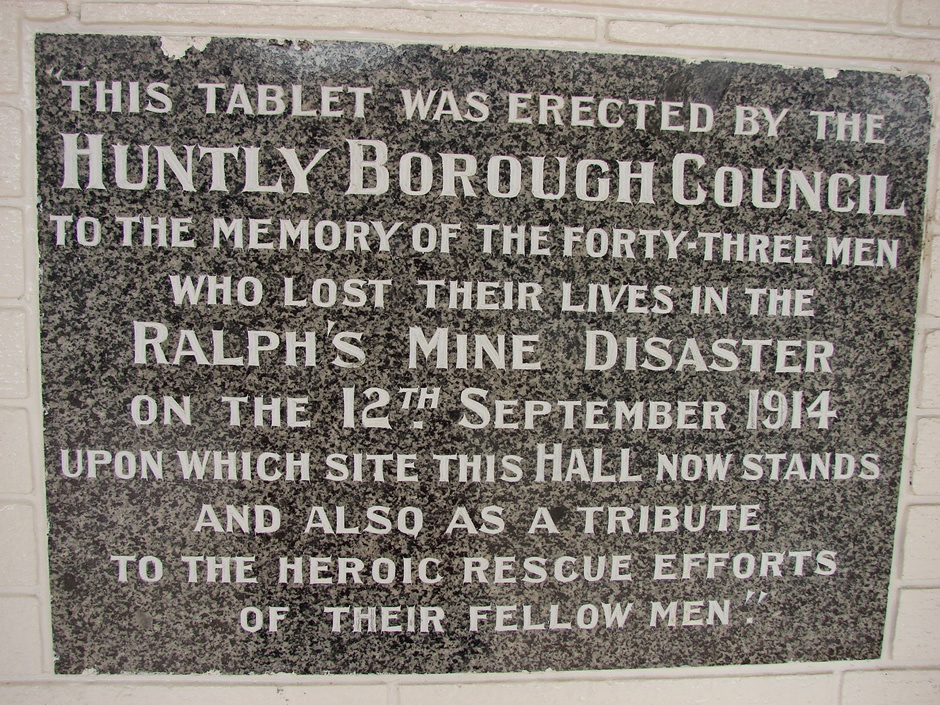
At 7:20 am on 12 September 1914 a huge explosion racked Ralph’s Mine in Huntly. A great column of smoke and dust and flame shot from the mine entrance on Huntly’s main street. A total of 43 men died in the explosion or its aftermath.
The mine was subsequently closed. The Huntly town hall was built on the pithead and officially opened on 21 June 1927. A marble plaque commemorating the disaster was set into one wall of the new building. The town hall was demolished in 1978, but when a branch of the Bank of New Zealand was opened on the site, the memorial plaque was transferred to the northern wall of the bank.
The victims had all been buried in the Huntly cemetery to the north of the town. In 2009 the Huntly Lions Club erected a miniature replica of a mine poppet head in the cemetery along with a memorial board showing the locations of the graves. This was unveiled by Mayor of Huntly Peter Harris on 19 April 2009. In 2013 the Lions Club also erected a larger model poppet head and a memorial stone to the victims near the original memorial plaque. These were unveiled on 13 September 2014, the day after the centennial of the disaster.
Many sources today refer to the ‘Ralph Mine disaster’. The mine was contemporarily known as Ralph’s Mine.
Sources: ‘Terrible Explosion: Sensation at Huntly: Catastrophe at Ralph’s Mine’, Thames Star, 12/9/1914, p. 5; ‘Explosion at Huntly’, Auckland Star, 12/9/1914, p. 8 [etc.]; ‘Report of Royal Commission on the Huntly Mining Accident’, AJHR, 1914, C14; David More, Between the River and the Hills, Auckland, 1976, pp. 86-8; Huntly Heritage Trail No. 1, Huntly, rev. ed., 2012 [pp. 8-11]; ‘Huntly Mine Explosion “Never Forgotten”’, Waikato Times, 13/9/2014.











Community contributions